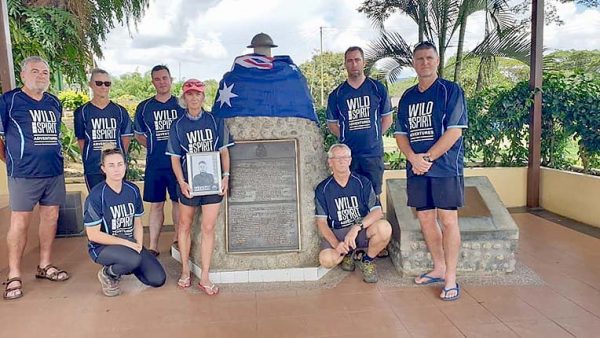

ALTHOUGH the Sandakan Death March is considered to be the single worst atrocity suffered by Australian servicemen during World War II, the 260km trek through Borneo’s dense jungle will hold a special place in one Limestone Coast woman’s heart.
Mount Gambier resident Kerry Pedler retraced the steps of her late cousin Edwin Orr, who was one of 1700 Australian prisoners of war forced to walk to their death in Borneo.
Australian prisoners captured by the Japanese were sent to Sandakan in 1942 to build an airstrip and were initially treated reasonably well.
Gradually, rations were reduced and violence increased.
“Conditions in the camp were horrendous and the prisoners suffered from starvation, torture, brutality and malnutrition due to their rations being reduced,” she said.
When Allied forces started advancing towards Borneo in 1944, the Japanese sent a 2700-strong Allied contingent westward to Ranau, in Borneo’s rugged interior.
“The Japanese moved the prisoners in three separate groups,” Ms Pedler said.
“Edwin was in the first group which consisted of 550 of the fittest men and they were essentially used as pack mules.
“They were forced to carry all of the equipment and food but if they were not keeping up they were shot or if they tripped or laid down they were pushed off the track.”
Prisoners staggered hundreds of kilometres through the unrelenting jungle conditions, with many dying on the way, their bodies never recovered.
Only six prisoners – all Australians – sent to Ranau survived the war.
Ms Pedler said the trek provided her with an understanding of the horrendous conditions prisoners were forced to ensure.
“The prisoners had no shoes, no body fat and most were ill,” she said.
“Easily the most challenging part of the whole experience was the emotion I felt especially when I made it to the camp knowing that is where Edwin passed away, but also from knowing just how much they had suffered.”
Despite the guelling emotional journey, Ms Pedler said walking in the footsteps of her late uncle was rewarding.
“Walking with like-minded Australians was also fantastic because we all supported each other, which is how it would have been for Edwin as well,” she said.
“We all had our hard days and we all made it through to the end.”
Last year, Ms Pedler trekked the famous Kokoda Track.
She said the Kokoda Track campaign was physically harder because of the topography.
“The Death March track was also tough because it was more exposed to the sun and humidity,” she said.
“It was a very rewarding experience and it was educational for me to learn about what happened to the soldiers.”





